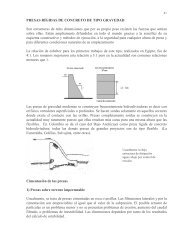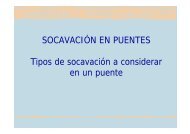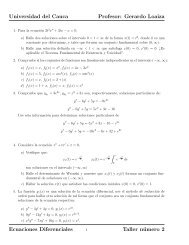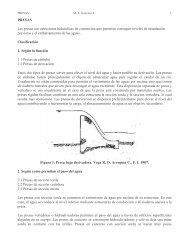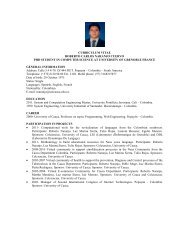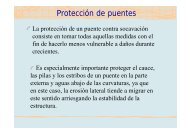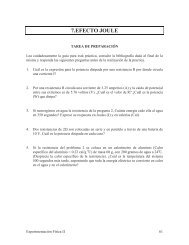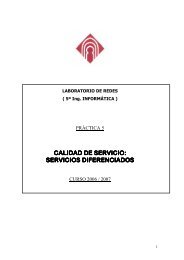Advice for the Project Management Professional (PMP)
Advice for the Project Management Professional (PMP)
Advice for the Project Management Professional (PMP)
You also want an ePaper? Increase the reach of your titles
YUMPU automatically turns print PDFs into web optimized ePapers that Google loves.
Licensed to:<br />
and task dependencies, you can view <strong>the</strong> network diagram and critical path in<strong>for</strong>mation.<br />
This section describes how to use each of <strong>the</strong>se time management features.<br />
Entering Task Durations<br />
When you enter a task, <strong>Project</strong> 2007 automatically assigns to it a default duration of one<br />
day, followed by a question mark. To change <strong>the</strong> default duration, type a task’s estimated<br />
duration in <strong>the</strong> Duration column. If you are unsure of an estimate and want to review it<br />
again later, enter a question mark after it. For example, you could enter 5d? <strong>for</strong> a task with<br />
an estimated duration of five days that you want to review later. You can <strong>the</strong>n use <strong>the</strong> Tasks<br />
With Estimated Durations filter to see quickly <strong>the</strong> tasks <strong>for</strong> which you need to review<br />
duration estimates.<br />
To indicate <strong>the</strong> length of a task’s duration, you must type both a number and an appropriate<br />
duration symbol. If you type only a number, <strong>Project</strong> 2007 automatically enters days<br />
as <strong>the</strong> duration unit. Duration unit symbols include:<br />
● d = days (default)<br />
● w = weeks<br />
● m = minutes<br />
● h = hours<br />
● mo or mon = months<br />
● ed = elapsed days<br />
● ew = elapsed weeks<br />
For example, to enter one week <strong>for</strong> a task duration, type 1w in <strong>the</strong> Duration column.<br />
(You can also type wk, wks, week, or weeks, instead of just w.) To enter two days <strong>for</strong> a task<br />
duration, type 2d in <strong>the</strong> Duration column. The default unit is days, so if you enter 2 <strong>for</strong> <strong>the</strong><br />
duration, it will be entered as 2 days. You can also enter elapsed times in <strong>the</strong> Duration<br />
column. For example, 2ed means two elapsed days, and 2ew means two elapsed weeks. You<br />
would use an elapsed duration <strong>for</strong> a task like “Allow paint to dry.” The paint will dry in<br />
exactly <strong>the</strong> same amount of time regardless of whe<strong>the</strong>r it is a workday, a weekend, or a<br />
holiday.<br />
TIP<br />
If <strong>the</strong> Duration column is not visible, drag <strong>the</strong> split bar to <strong>the</strong> right until <strong>the</strong> Duration column is in view.<br />
Entering time estimates or durations might seem like a straight<strong>for</strong>ward process. However,<br />
you must follow a few important procedures:<br />
● As you saw in <strong>the</strong> previous section, when you enter a task in <strong>the</strong> Task Name column,<br />
1 day? appears in <strong>the</strong> Duration column. The question mark means that<br />
you are unsure of <strong>the</strong> duration or want to go back to it. Be sure to enter <strong>the</strong><br />
durations you want to appear.<br />
● Do not enter durations <strong>for</strong> summary tasks. Summary task durations are calculated<br />
automatically based on <strong>the</strong> subtasks. If you enter a duration <strong>for</strong> a task and<br />
<strong>the</strong>n make it a summary task, its duration will automatically change to match<br />
<strong>the</strong> durations of its subtasks. <strong>Project</strong> 2007 will not allow you to enter or change <strong>the</strong><br />
Copyright 2009 Cengage Learning. All Rights Reserved.<br />
May not be copied, scanned, or duplicated, in whole or in part.<br />
347<br />
Guide to Using Microsoft <strong>Project</strong> 2007



